Advertisements
Advertisements
प्रश्न
DL and BM are the heights on sides AB and AD respectively of parallelogram ABCD (see the given figure). If the area of the parallelogram is 1470 cm2, AB = 35 cm and AD = 49 cm, find the length of BM and DL.
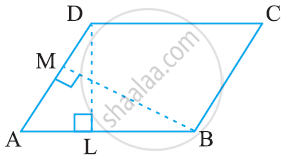
उत्तर
Area of parallelogram = Base × Height
= AB × DL
1470 = 35 × DL
DL = `1470/35`
DL = 42 cm
Also, area of parallelogram = AD × BM
1470 = 49 × BM
∴ BM = `1470/49`
∴ BM = 30 cm
APPEARS IN
संबंधित प्रश्न
Area of a parallelogram is 83.2 sq cm. If its height is 6.4 cm, find the length of its base.
Find the height ‘x’ if the area of the parallelogram is 24 cm2 and the base is 4 cm.
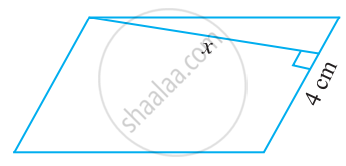
The area of parallelogram whose base 10 m and height 7 m is
The base of the parallelogram with area is 52 sq.cm and height 4 cm is
The height of the parallelogram is one-fourth of its base. If the area of the parallelogram is 676 sq.cm, find the height and the base
Observe the shapes 1, 2, 3 and 4 in the figures. Which of the following statements is not correct?
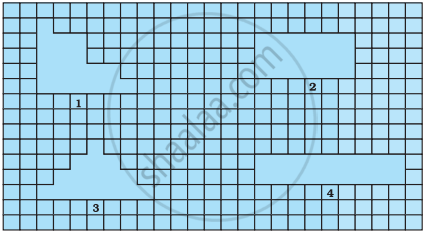
Area of parallelogram ABCD (see the figure) is not equal to ______.
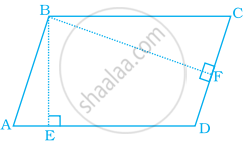
In the given figure, area of parallelogram BCEF is ________ cm2 where ACDF is a rectangle.
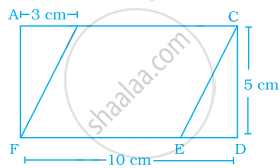
In the given figure, area of ∆AFB is equal to the area of parallelogram ABCD. If altitude EF is 16 cm long, find the altitude of the parallelogram to the base AB of length 10 cm. What is the area of ∆DAO, where O is the midpoint of DC?
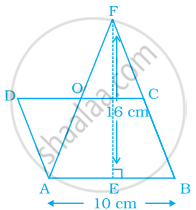
ABCD is a parallelogram in which AE is perpendicular to CD as shown in the given figure. Also, AC = 5 cm, DE = 4 cm and area of ΔAED = 6 cm2. Find the perimeter and area of parallelogram ABCD.
